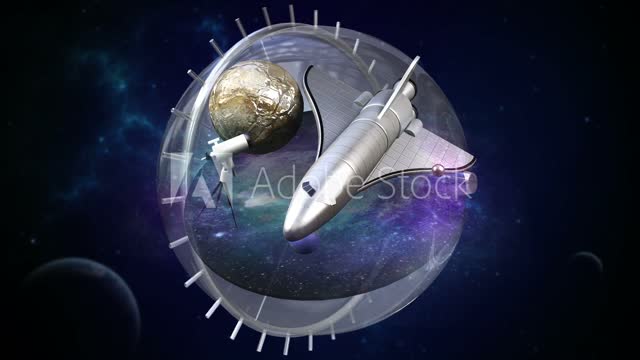Premium Only Content

NASA’s Webb Telescope captures ‘Phantom Galaxy’ in unprecedented detail
The Phantom galaxy captured by the James Webb Space Telescope is classified as a “grand design spiral,” which means that it has prominent and well-defined spiral arms.
Webb inspected the heart of the Phantom Galaxy. (Image credit: ESA/Webb, NASA & CSA, J. Lee and the PHANGS-JWST Team)
The James Webb Telescope captured this image that shows the heart of the Phantom Galaxy, which is officially known as M74. The stunning image reveals the delicate filaments of gas and dust in the spiral arms of the galaxy. The lack of gas at the centre of the galaxy also provides a view of the nuclear star cluster.
The Phantom galaxy is classified as a “grand design spiral,” which means that it has prominent and well-defined spiral arms, which is not the case for all spiral galaxies as some have patchy and ragged structures.
Also, Read |Listen to James Webb Space Telescope’s first images translated into sound
M74 is approximately 32 million light-years away from Earth in the Pisces constellation. It also lies almost face-on to Earth. Its position with respect to our planet and its well-defined spiral arms makes it a great target for astronomers studying the origin and structure of galactic spirals.
The Webb telescope observed M74 with its Mid-InfraRed Instrument (MIRI) to help scientists learn more about the earliest phases of star formation in our local universe. These Webb observations are part of the PANGS (Physics at High Angular resolution in Nearby GalaxieS) collaboration’s efforts to study neighbouring star-forming galaxies.
These observations by Webb will be used by astronomers to measure the masses and ages of star clusters, gain insights into the nature of the small grains of dust drifting in interstellar space and pinpoint star-forming regions in these galaxies.
Previous observations of the Phantom Galaxy by Hubble had revealed bright areas of star formations, which are known as HII regions. Webb’s high sensitivity at infrared wavelengths is complemented by Hubble’s sharp vision at ultraviolet and visible wavelengths. Scientists can gain greater insight into astronomical objects by combining the data from multiple telescopes operating across the electromagnetic spectrum.
About us https://bit.ly/3GUPFOa
Contact us +919942258153 kvk.subadhra@gmail.com
https://d39b98-93406cx49325fofwawf.hop.clickbank.net
-
 LIVE
LIVE
Glenn Greenwald
4 hours agoAs Trump Vows to Restore Free Speech, Harvard Just Assaulted It; Columbia Professor Forced Out Over Israel Criticisms | SYSTEM UPDATE #394
4,672 watching -
 LIVE
LIVE
The StoneZONE with Roger Stone
25 minutes agoTrump Pardons Ross Ulbricht | The StoneZONE w/ Roger Stone
1,769 watching -
 LIVE
LIVE
2 MIKES LIVE
9 hours ago2 MIKES LIVE #170 with special guest Rep. Buddy Carter (R-GA)
487 watching -
 7:09:22
7:09:22
Dr Disrespect
9 hours ago🔴LIVE - DR DISRESPECT - TRIPLE THREAT CHALLENGE - EXTREME EDITION
195K22 -
 55:00
55:00
LFA TV
8 hours agoThe End of the January 6 Hoax | TRUMPET DAILY 1.22.25 7pm
10K2 -
 1:13:37
1:13:37
Battleground with Sean Parnell
6 hours agoPresident Trump Is On FIRE w/ Savage Rich Baris
154K17 -
 1:59:59
1:59:59
Melonie Mac
3 hours agoGo Boom Live Ep 34!
17.8K4 -
 49:27
49:27
Sarah Westall
1 hour agoTrillion Dollar 5G Lawsuit, Project Archimedes, Mind Control & DEW Weapons w/Attorney Todd Callender
16.7K6 -
 53:11
53:11
Standpoint with Gabe Groisman
1 day agoTrump Is Crucial For Hostage Agreement Says Israeli Colonel
21.5K4 -
 1:01:22
1:01:22
Anthony Pompliano
1 day ago $0.66 earnedTrump Inauguration Sends Bitcoin Flying
16.3K2